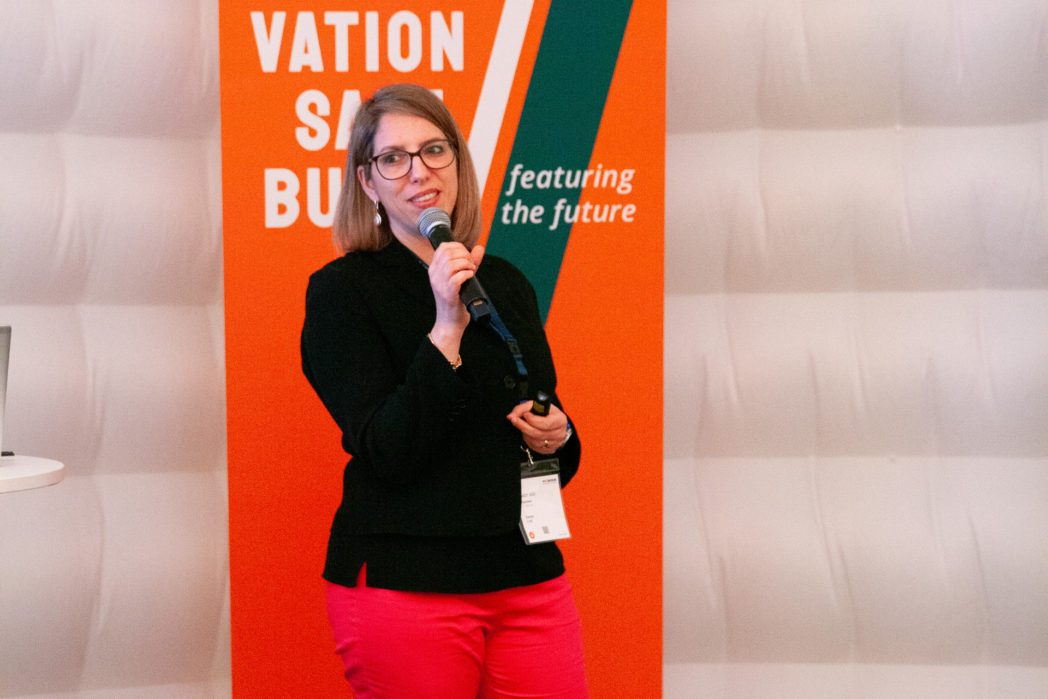
Diesel fuel cannot be replaced by just one technology in transport. Esther Lind, General Manager Sales and Innovation at the Salzburger Aluminium Group (SAG), made people sit up and take notice at the Industry Talks of Innovation Salzburg at salz21.
For a long time, diesel was THE solution for all transport applications. But it now has to be replaced due to its high CO2 emissions. Electric and increasingly also hydrogen drives are gaining ground on the market for passenger transport. Hydrogen propulsion is either by combustion or fuel cells and is stored in gaseous or liquid form. Today, gaseous storage is the most widespread. With this, an average range of 400 to 900 kilometres can be achieved. However, gas requires a lot of space for storage and thus more tanks per vehicle. It is therefore not the right fuel for every application.
Storage of liquid hydrogen as a challenge
For commercial vehicles, research is therefore also being conducted into alternative forms of propulsion. In recent years, liquid hydrogen (LH2) has also come into focus. It is more sustainable, the range is longer and, above all, it does not require as much space for storage. “Aviation is also becoming more and more involved with this technology. This was unthinkable a few years ago,” Esther Lind summarised the dynamics in current research.
SAG is therefore researching storage tanks for liquid hydrogen. The big challenge here is that it has to be stored at -253 degrees. The temperature must be kept stably so cold. This works with insulators, which are also used in space travel. More than 500 different components are installed in the storage tank. “SAG is working its way into a completely new, very complex segment here. And we are working with suppliers who do not normally manufacture their products in these quantities,” says Esther Lind.
Do not think sustainable mobility alone
The entire research is therefore a major challenge that requires close cooperation between many industry segments and partners. “We cannot think about sustainable mobility alone. We need the industries, the users, but also the infrastructure. To get prototypes on the road, you first need filling stations where liquid hydrogen can be refuelled. For the development to work, we need innovative strength on all sides and joint and open work in networks,” said Esther Lind.
The costly research also raises questions at SAG: “How can you finance such costly research into new technologies and also scale it up quickly? Currently, switching from propulsion systems to LH2-powered vehicles would not be economical.” There is no doubt that the decarbonisation of transport must happen quickly. Which fuel will prevail in truck transport is still unclear. Esther Lind: “There will be many technologies, and not THE one. Each user will choose the drive that suits his market well.”
That might be interesting for you
11. November 2025
Eleven Million Euros for Five New Research Centers
Salzburg is investing in research: around eleven million euros from EU and state funds will go toward establishing five new research and transfer centers. They cover key future-oriented topics: artificial intelligence, climate protection, health, tourism, and data security.
24. October 2025
Christian Doppler Laboratory unites Artificial Intelligence and Image Processing in Salzburg
Salzburg is strengthening its cutting-edge research: In the new Christian Doppler Laboratory for the Authentication of Persons and Object Surfaces, innovative solutions for enhanced security are being developed by combining artificial intelligence and image processing. These solutions are created in close collaboration between science and industry.
4. June 2025
New Database for Commercial Properties and Sites in Salzburg
The new online platform www.standort-salzburg.at makes it easy to find available commercial properties, business premises, and brownfield sites across the entire province – all with just a few clicks.
6. March 2025
salz21: Necessary Steps for the Future
On March 5, 2025, salz21 | Home of Innovation once again provided a platform for future topics, innovations, and interdisciplinary exchange. More than 1,000 visitors took the opportunity to learn about current developments and discuss perspectives for tomorrow. Three topics were particularly dominant: climate protection, artificial intelligence, and a strong Europe.